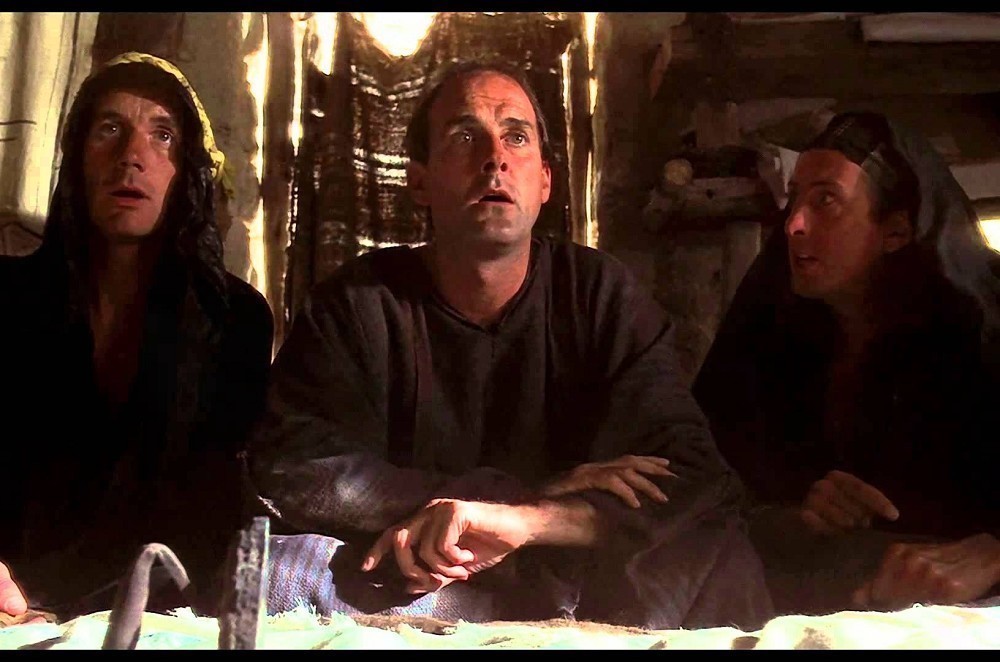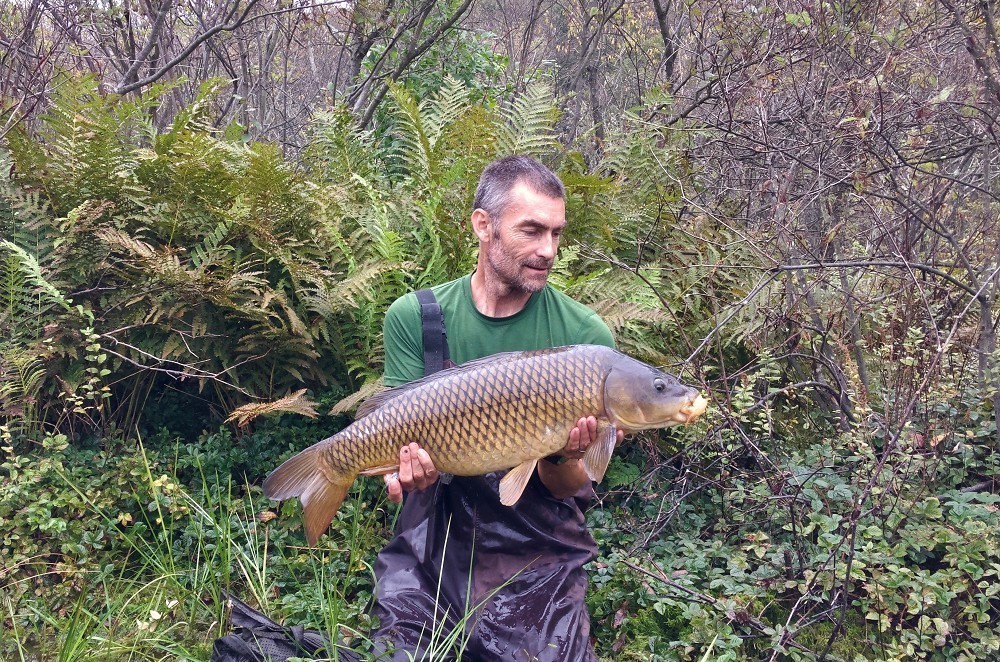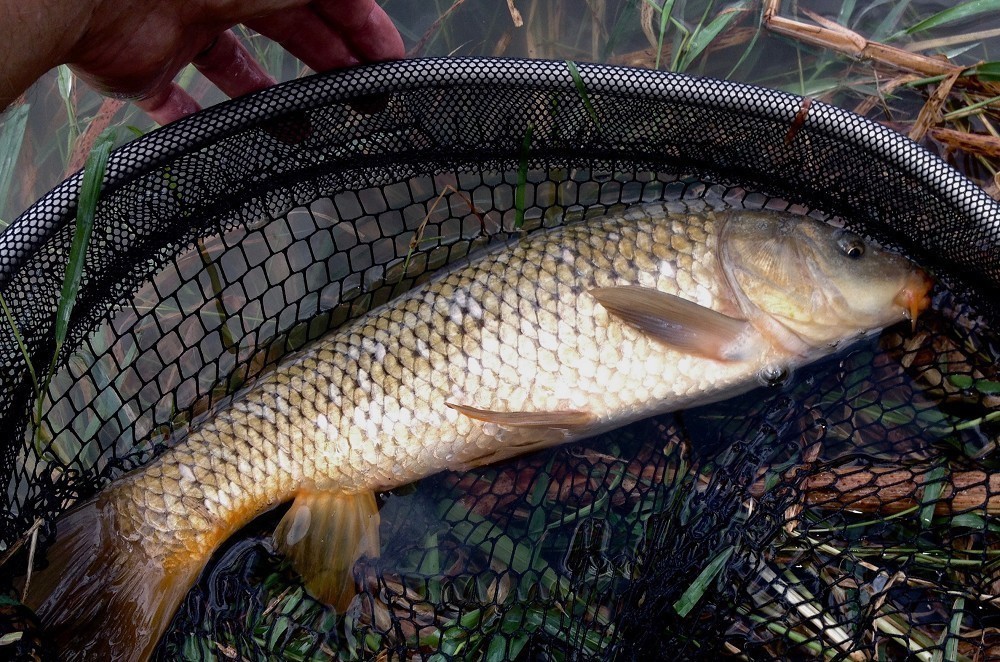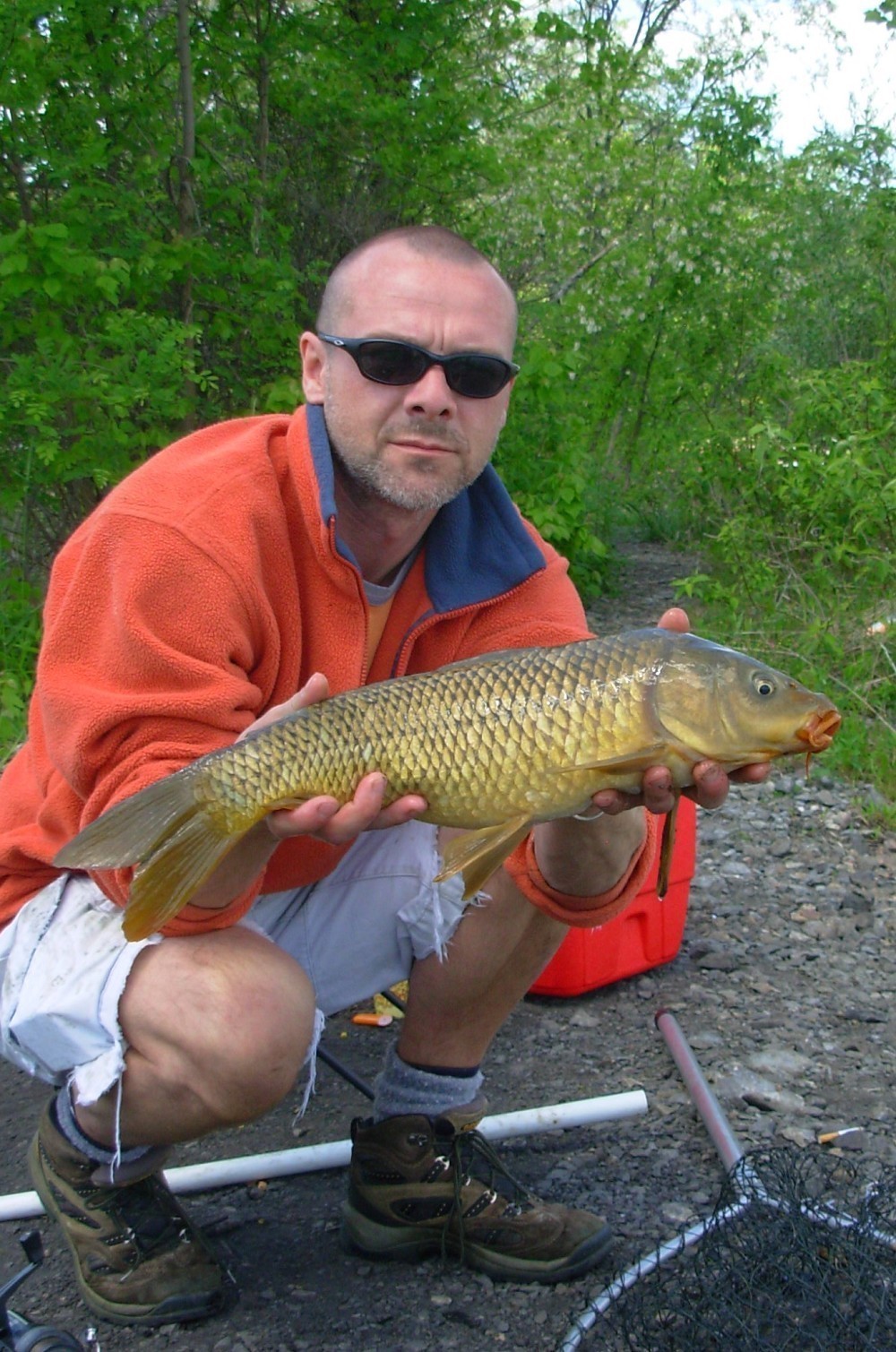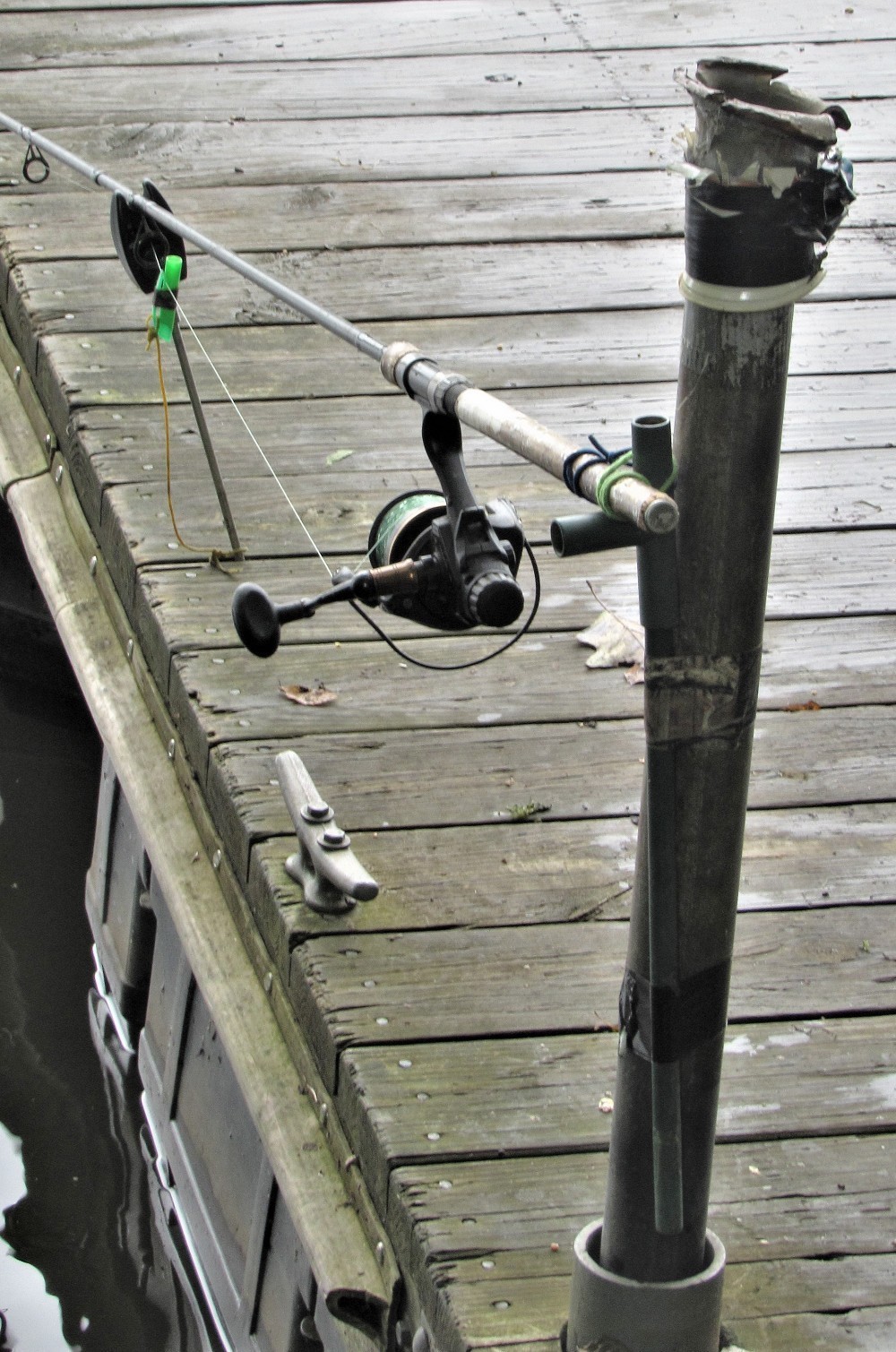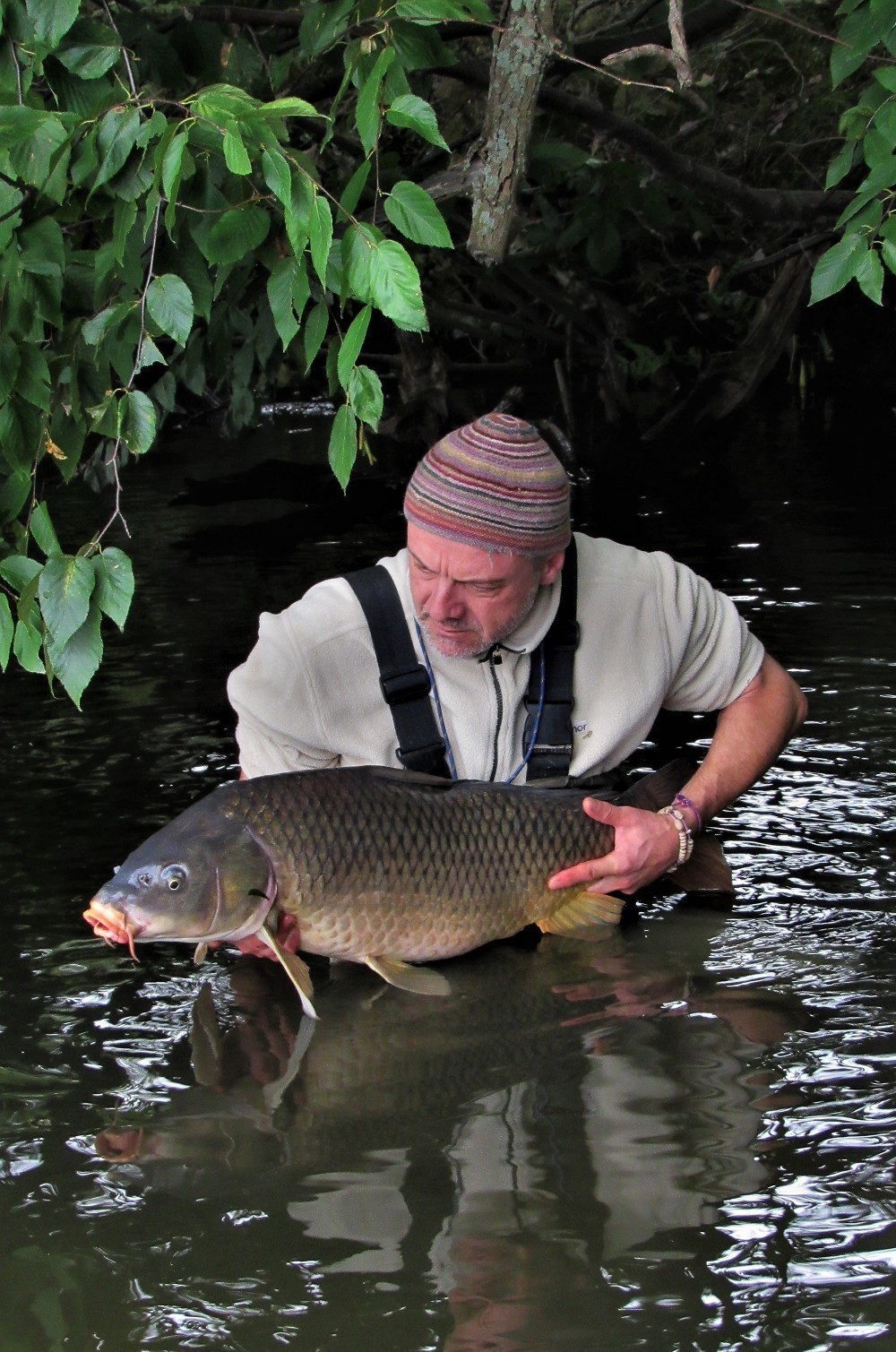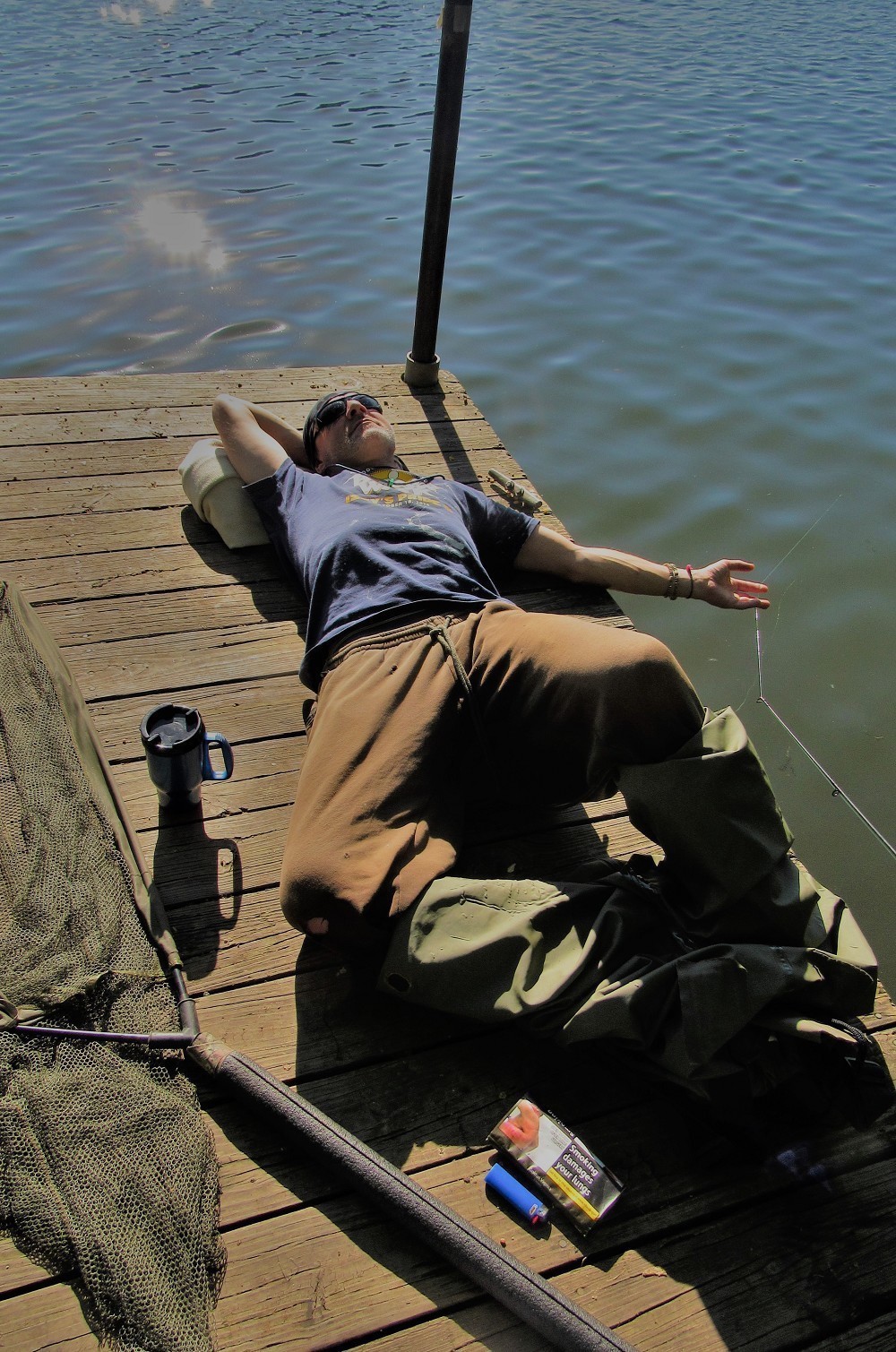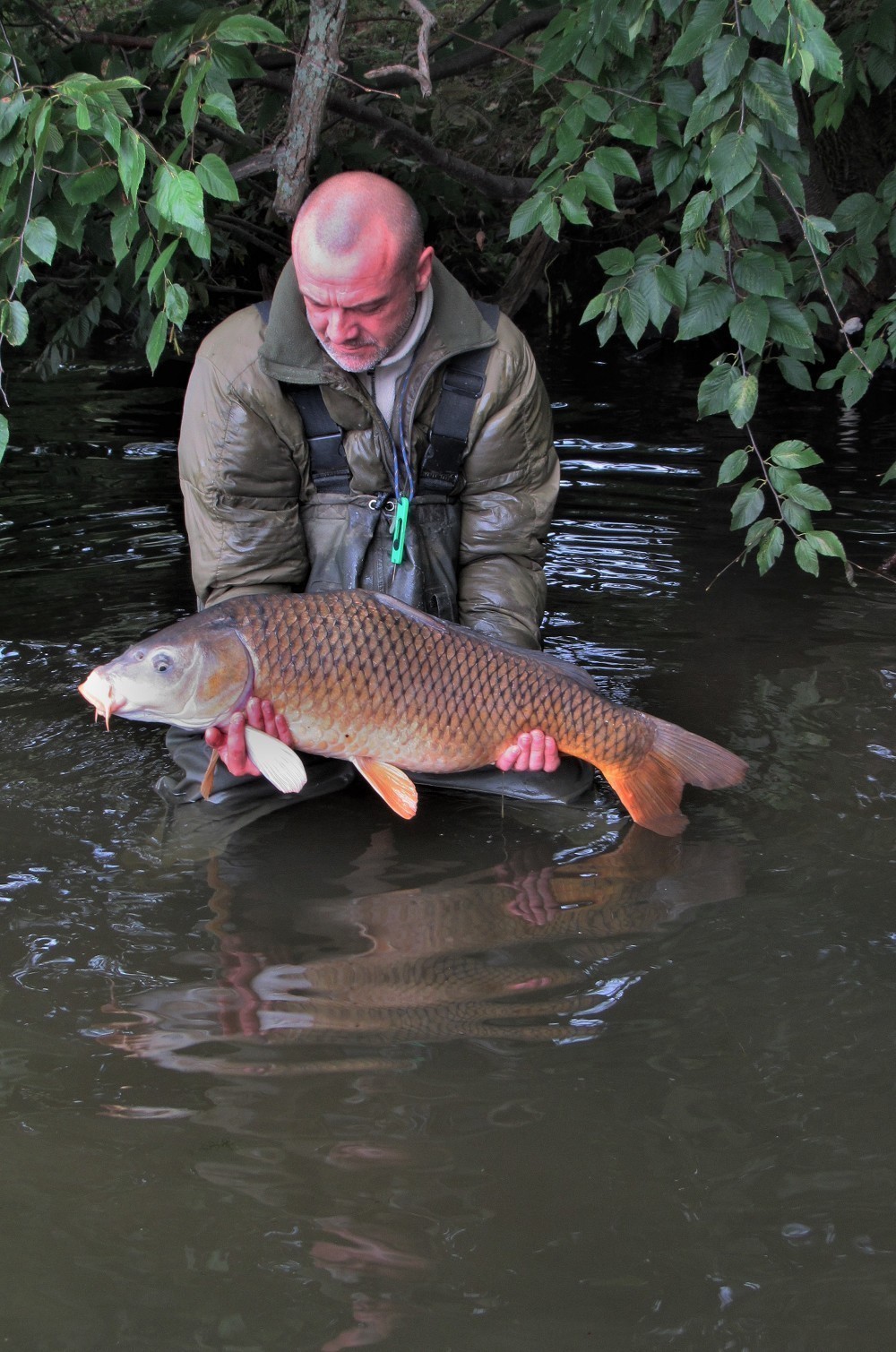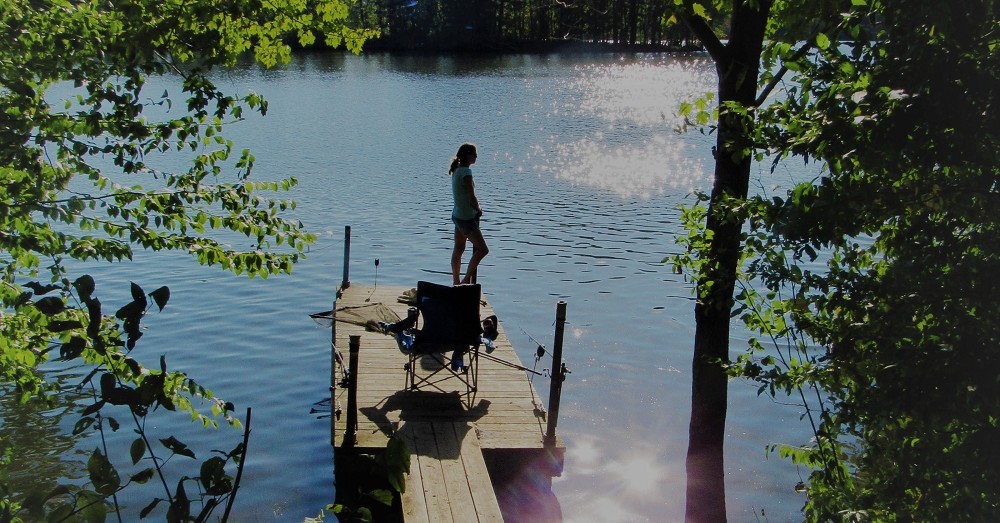
Carp Letter from America: September 2018
Simon Blanford and Andy Bell let us know what they've been up to this month...
September is an odd month. Demonstrably the ninth month in the Gregorian calendar its name nevertheless means ‘seven’ from the French ‘sept’, and the older Latin ‘septem’. The reason, an extremely brief foray on the intertubes revealed, is simply that in the old Roman calendar September was the seventh month and although the origins and exact nature of this calendar are debated, this old calendar (the one before those silly Republicans got in and started to mess it around with their intercalate months) only had ten months. It left the winter as an unorganised, monthless void. Which is rather lovely given that winter is a desperate period of darkness, wolves and woes and not an inconsiderable amount of drink as Andy will tell anyone willing to listen. At least it is here especially as, writing this in October, the temperatures have plummeted 15oC and the first frost of autumn is reaching out its long cold fingers.
The Romans never did do anything for America. Though hold that thought. What with the current state of the place and the fact that pretty much all other ancient civilizations are said to have, at one time or another, discovered the continent (Vikings, Polynesians, neolithic Russians, Chinese, Japanese, the ancient antecedents of aardvarks) let alone the obvious fact that a large portion of the United States current inhabitants are firmly convinced that the place was colonised by various extra-terrestrial races and that not only does this seem more and more likely the longer one lives here but also increasingly that some-things up there, in their shiny, faster than light vessel, are having a good laugh (through whatever appendage or orifice they might use to manufacture such mirth) at what is going on down here, it may be that the Romans really did pop over in a trireme to seed the waters of the continent with carp. It’s just very unlikely.
Simon hates winter. The cold, the stacking, chopping and lugging of logs, the cold, the iced lakes, the cold, the over zealous braying of skiers, the cold (Andy avoids all this by simply hibernating the time away in an alcoholic haze). Hence, given the looming hand of winter, September should be a time during which we revel in the autumnal glut, plunder the carp populations as they throw caution to the wind, fattening up for the long purgatory of the unorganised, monthless void. Trouble is Simon’s time has been severely crimped by other considerations and for the whole month, try as he did to scheme and plan and plot more bankside forays, he ended up totaling one small session. Small because he was restricted to a day trip with most of the time taken up driving north to a water just this side of him requiring a different State’s license. This was a water he’d wanted to fish for a while since having seen it when he and Andy made a joint foray to the Finger Lakes in neighbouring New York State. It was a bleak day, mizzle drifted across the bay he fished and even though it was only a little further north the leaves were already showing signs of the seasonal change marching down from higher latitudes.
The carp, of which there were supposed to be a few, were hard to find. Still there was a bald eagle and, when it wasn’t there, an osprey took its place, landing in a tall pine and mewing at something in that plaintive way birds of prey have. Eventually, reeling in the rods, Simon took a kayak trip to explore the bay he was fishing. Were there really any carp here at all or was he like one of the many definitions of a fool - a person fishing in water that contained no fish? But, Lo! Just down the bank, a bit beyond where his rigs sat, he found a mushrooming cloud of mud. Rather obligingly the cause of the disturbance lifted in the water so that Simon could get a better view. Mouth pumping mud and debris until all cleared out, the carp simply sat there, suspended, eyeing Simon with a knowing expression. Signs of carp made it easier to return to his pitch and recast over the light bed of bait he’d distributed earlier. A patchy covering of weeds here and there some rising a few inches off the bottom called for a naked chod style approach with the other rod set up with a standard helicopter rig, armed with one of those set-ups that employ a swivel through the eye of the hook - there are so many different names for essentially the same rig now that who knows what to call it now?
Patience was rewarded in the early afternoon with an absolute belter of a run, a very stubborn fight and a gorgeous dark, tubby and untouched fish a little short of twenty pounds. Nothing else happened through the rest of the afternoon though another fish leapt from the water against the far bank some two hundred yards distant. One more circuit with the kayak on the point of packing up showed that three strategically placed handfuls of corn in different areas hadn’t been touched but another carp, substantially bigger than the one landed earlier, did reveal itself briefly as it coasted past some marginal reeds. A quiet, not very productive but in many ways deeply satisfying session and one that makes venue selection for next season all the more difficult.
But back to the Romans for a moment. The old latin buggers are often thought to have had a considerable amount to do with the domestication of carp and their subsequent dissemination across Europe, which would give them, if not a direct then certainly remote connection to the carp we fish for here. Some have even gone so far as to say that the Romans were responsible for the carps appearance in England and that the much lauded Wilde Carpe of Olde Englande, the ‘wildies’ as they are colloquially known, are the descendants of these ancient introductions. It was an idea originally promulgated by an eminent fish biologist who built his career studying carp. He didn’t claim that the Romans delivered the fish to an eager bunch of Iceni but he did say that they brought them back to Italy to rear in their piscinae. This gives those people who just want the story to be true, traction for claiming it so. Indeed, one self-published missive read recently, (an edition of Fennel’s Journal), wants us to believe the Romans actually brought the fish over with them as evidenced by some fish bones subsequently dug up by archaeologists.
That historians don’t think they are carp bones results in some astonishing wish fulfillment where the author asks us to simply believe it were so. As if wishing ever did. Obviously the whole claim is arrant nonsense. But even without this fantasy many anglers like to think that the wildie is a specific strain of English carp, a traditional type unsullied by all those deplorable immigrants we hear so much about nowadays, a type that we can hang our hat on and say this is ‘ours’. Carp didn’t get to England until the 15th century when they had already been in cultivation on the continent for 200 years. It stretches credulity to think that this cultivation process would deliberately seek to select the thinnest fish for restocking, and as records attest those fish that did come over had certainly seen some size selection going on already. This is why all the old images of carp in the various fishing books from the 1600s onwards show a fish that is instantly recognizable as a well-shaped, even portly at times, modern looking fish. Certainly not a thin, torpedo wildie. So what are those wildies, lauded by a certain traditionally minded faction of the English fishing public (though notably absent from CARPology’s publications)?
The question may seem strange in a column about American carp fishing but the fact is that there are wildies here. Lots of them. There is a lake just down the road replete with the little beggars. And it’s not a small, ancient puddle but a 1500 acre reservoir. How can the ancient English fish be here too? The simple answer might be that there is no such thing as an original English strain. Wildies are often found in overpopulated, heavily eutrophic waters. Farm ponds, castle moats and old stock pools as well as ancient, silted estate lakes and meres. Life is hard in these places: cramped living space, food shortages and high levels of competition. The characteristic of fish (not just carp) that come from these waters is small size for age, and low body condition. And that would simply make wildies the products of their environments - they are overpopulated, ever hungry carp. This doesn’t preclude there being strains that have adapted to these kinds of conditions. But it is unlikely to be one type. To claim so would be like asking which brown trout is the original English fish. The buttery fat kind from the southern chalkstreams? The coal dark, bright red-spotted version of the northern moors? What about all the variations in-between? The Victorians tied themselves in knots trying to parse each variation in colour, each unique splatter of spots to different species. But they are all just trout adapted each to their particular water. Like trout, the carp that colonised England likely show as much variety as the habitats they live in - the long and lean wildie just variation on a theme. The Romans didn’t do anything for carp here, the carp did it all themselves, adapting to the various waterways as they spread out across the United States: just as they did a few centuries earlier in England.
Unlike Simon’s curtailed expectations for September Andy was in full fishing mode and with daylight hours constricting, temperatures dropping and their US sentence almost served Andy and Mrs Andy sought out a last-gasp 2018 thirty.
The penultimate venue, the as yet untried Legendary Lake, saw them heading blindly westwards. Whilst rumours of the lake's mighty residents were not unknown to them, quite what they might reasonably hope to achieve during a virgin three day session, on what is a very large body of water, was highly debatable. Nevertheless, Mrs Andy was in a most buoyant mood, knowing that a luxury cabin awaited her. Andy knew not what mare of a swim might confront him.
Rolling up on a wet and miserable day it materialised that the cabin-associated waterfront was rather narrow, narrow and enshrouded by trees. Not only was it snug but it also bore a floating wooden dock in its centre. At least this slick, nodding, rather treacherous structure provided access for a cast; it also suggested the not inconsiderable potential for a fractured skull and widowed Mrs Andy. She rather liked the look of the set-up.
Nothing was showing amidst the chop but plumbing from the dock's extremity Andy immediately cheered up, the water being seven feet deep beneath him and dropping steadily to 12ft only three rod lengths out. The bottom was firm with scattered weed beds extending out to a depth of 10ft or so and even way beyond there were no obvious snags. Rod location was the issue: hanging branches precluded the possibility of the bank and the water was too deep for margin placements, leaving only the oscillating dock itself - and this for a pod-less man. A beer and a eureka moment later the Duck tape emerged, butt supports were duly adhered to the dock's rear vertical struts and buzzer bars forced through gaps between suitable planks. Andy would fish to either side of the dock with each rod readily accessible from the waist-high water, negating the need for post-dark dashes onto its malign surface and imminent wet demise.
Armed once again with this season's go-to peanut mix, the designated spots were baited and dwindling trails laid thereto. Basic shrink-tube-turned and silicone-bearing claw rigs (hell, if they're good enough for Sharpy) with peanut and corn wafters were cast. Mrs Andy briefly appeared to gush about her kitchen and bathroom. Oh, and the living room was toasty. Andy erected his brolley, hunkered down and ignored the periodic bleeps initiated by the more substantial waves. Thirty minutes later a run and a six pounder, then almost immediately upon the re-cast a cat, then a slip-off and the ensuing rig change, only to be followed by another cat. Cats are a pain, even ignoring if they are untargeted - primarily due to the horny pad on their lower jaw that almost always dulls a hook's point, but they do often precede the arrival of carp, certainly here in Pennsylvanian lakes. And so it proved, with the next run - only three hours in - yielding a decent common (not that Andy catches anything other than commons) just six ounces short of twenty.
By dark five more high-teens had been landed, although no big fellas had joined the party, and Andy was duly beckoned to come inside to sample the cabin's delights. Although there was a mutual desire to eat, and in Andy's case to warm the hell up, somehow the door had closed behind Mrs Andy and they were locked out. With phones and car keys cozy within the cabin things looked bleak. The adjacent cabin roused it became apparent that rangers, bearing spare keys, were no longer on duty - handy information for later alcohol consumption, but of cold comfort currently. Cue the removal of a window's insect mesh, a push on the frame, an upward shimmy and hey-presto a non-wader-wearing Mrs Andy was worming her way in. A note here: the ranger did, two days later, come to investigate their predicament, although his sole concern was not regarding their escape from hypothermia but instead "how the heck did you fellas break in"...
The next day a pre-dawn six am start was greeted with three cats before a hectic spell of nine fish, including two low twenties, before breakfast. The Legend was proving prolific, if not epic. In an effort to lure something more sizable one rig was switched to a Withy bearing a 20mm pineapple corkball boilie sitting tight on the hook's curve - yes, it's still yellow, but it is a bit different: larger, rounder, pineappleier and.... popped-up. Indeed the next fish fell to it: a cat - a far larger channel cat, but a cat. Not too perturbed in again went the corkball and out once again came a channel cat. Not known for his patience nor profligacy with rigs there was a swift return to the wafting corn and peanut cocktail and a resultant nineteen pound carp. And so it continued. Two rods across three days (roughly 40-odd hours in the water) produced 31 carp with five low twenties and an average weight of over 15lb. Not a bad look-see at a new water, especially when tied to an unknown swim, but, equally, not what was desired. Even the Neighbour's appearance for the final evening and the subsequent nonchalant boozy indifference to the rods couldn’t lure something special.
A thirty this year for Andy would rely on the very last outing, an outing that would see a return to the cabins at The Other Lake, those cabins that had proved so meagre in their returns for our last few sessions. Why there of all places and to see how he got on will be revealed in next month's CLfA.



